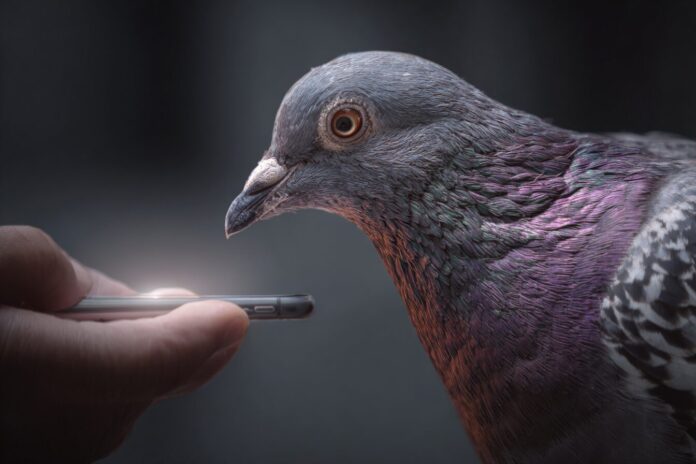How Pigeons Changed Our Approach to Artificial Intelligence
Artificial intelligence (AI) holds a reputation for complexity. Yet, recent research reveals something astonishing: the way pigeons learn is closely linked to how AI systems develop their abilities. This connection not only fascinates scientists but also pushes the boundaries of what technology can achieve by drawing inspiration from the natural world.
Most importantly, the alignment between pigeon learning and machine learning techniques emphasizes that nature’s simple mechanisms can inform high-tech solutions. Because pigeons use trial-and-error methods to master tasks, their learning process provides insights into reinforcement learning. Therefore, when pigeons perform visual categorization tasks on touchscreens, as demonstrated in controlled studies, they mirror the very basics of how neural networks operate. This extraordinary similarity is detailed further in studies available at Windy City Parrot and OSU News.
Because of this shared learning process, researchers now see pigeons not simply as humble birds, but as biological blueprints for AI. When both pigeons and artificial neural networks face complex challenges, they do not try to generalize abstract rules immediately; instead, they persevere through consistent feedback and iterative improvements. Besides that, their ability to reduce errors gradually through repetition offers a window into improving modern computational models.
Furthermore, scientists like Professor Edward Wasserman and Brandon Turner have emphasized that simple associative mechanisms drive both biological and digital learning systems. By leveraging these insights, computer scientists are now better equipped to develop systems that learn more organically. Therefore, the feedback-driven adjustments seen in pigeons can help improve algorithmic flexibility and robustness in AI coding techniques, as discussed in the publication on Firstrand.
In addition to reinforcing our understanding of AI, the study of pigeon intelligence challenges traditional views about animal cognition. Rather than viewing animals as simple mechanistic entities, modern research encourages us to appreciate the complexity and adaptability inherent in nature. As highlighted by Tom’s Hardware, this approach not only helps refine AI models but also redefines our understanding of learning and adaptation across species.
Native Artists and the Reimagining of Technology
Innovation does not reside solely within the confines of scientific laboratories. Across North America, Native artists are redefining the purpose and potential of technology by integrating it with cultural heritage. Their creative processes transform digital tools into mediums that articulate centuries-old traditions and contemporary narratives simultaneously.
Because technology and tradition need not be opposites, these Native creators use digital platforms to explore and express their identities. Most importantly, they merge traditional symbols with modern aesthetics to produce artwork that resonates on multiple levels. For example, artists often use AI-based generative art engines to reinterpret tribal narratives, thereby producing works that incorporate elements of folklore with contemporary data processing techniques. Detailed insights into these innovative practices can be found in the Oxford report on AI and the Arts.
Besides providing a new visual language, the integration of traditional knowledge with modern code challenges the notion that technology is strictly the domain of outsiders. Therefore, Native artists see digital innovation as a tool for cultural revitalization and storytelling. They create interactive installations and multimedia exhibits that invite audiences to experience indigenous narratives through augmented reality and digital storytelling.
Moreover, these artists contribute to a growing dialogue about the ethical use of technology. Their work often reflects on issues such as cultural appropriation, representation, and autonomy, while simultaneously celebrating the beauty of indigenous practices. By merging code and culture, Native artists are not only preserving valuable traditions but are also spearheading a broader movement towards meaningful technological reinterpretation.
Convergent Paths: Nature, Technology, and Artistic Expression
Ultimately, the intersection of biology, technology, and art invites us to rethink the nature of intelligence on many levels. Pigeons’ unexpected role in AI research opens doors for creating more adaptive, organic learning algorithms, while Native artists show us how technology can be harnessed to reinforce cultural identity and continuity.
Most importantly, these convergent paths highlight that the divisions between natural intelligence and artificial creativity are diminishing. Because both domains rely on iterative learning and adaptive innovation, breakthroughs in one field invariably influence the other. Therefore, by exploring cross-disciplinary approaches, scientists and artists alike are developing systems and narratives that are both resilient and rich in meaning.
In addition, the collaborative efforts between researchers and indigenous communities serve as a reminder that technology should be inclusive and reflective of diverse perspectives. When we draw on insights from both the natural world and cultural traditions, we are more likely to develop technologies that are robust, ethical, and innovative.



